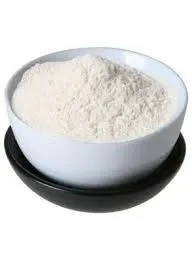
Aug . 30, 2024 18:59 Back to list
hydroxypropyl methylcellulose powder
Hydroxypropyl Methylcellulose Powder An Overview
Hydroxypropyl methylcellulose (HPMC) is a versatile, cellulose-derived polymer that has gained significant attention in various industries, including pharmaceuticals, food, and construction
. This compound is synthesized by the modification of natural cellulose, resulting in a non-ionic, white powder that is soluble in water and possesses unique properties suitable for diverse applications.HPMC is often utilized in the pharmaceutical industry as an excipient in drug formulations. Its ability to form gels and films makes it an excellent choice for controlled-release drug delivery systems. By incorporating HPMC into tablets and capsules, manufacturers can achieve a prolonged release of active ingredients, improving therapeutic effectiveness and patient adherence. Furthermore, HPMC is frequently employed as a binder in solid dosage forms, enhancing the cohesiveness of powders and ensuring uniform distribution of active pharmaceutical ingredients.
In the food industry, hydroxypropyl methylcellulose serves multiple purposes. As a food additive, it is recognized for its thickening, emulsifying, and stabilizing properties. Often labeled as E464, HPMC is used in various products, ranging from sauces and dressings to baked goods and dairy alternatives. Its ability to retain moisture is particularly valuable in improving the texture of low-fat and gluten-free products, enabling food manufacturers to create healthier options without compromising on quality.
hydroxypropyl methylcellulose powder

In the realm of construction, HPMC is utilized as a key ingredient in cement-based products, such as tiles, plasters, and adhesives. Its water-retention properties help improve workability and open time, allowing for better adhesion and manipulation during application. By enhancing the consistency and durability of construction materials, HPMC contributes to the long-term performance of buildings and infrastructure.
Additionally, hydroxypropyl methylcellulose has found its way into cosmetic formulations. Its ability to create a smooth texture and improve the consistency of creams, lotions, and gels makes it a popular choice for cosmetic manufacturers. HPMC also acts as a film-forming agent, providing a protective barrier on the skin and enhancing the overall sensory experience of personal care products.
While the benefits of HPMC are numerous, it is essential to consider safety and regulatory aspects. The compound is generally recognized as safe (GRAS) by various health authorities when used in appropriate amounts. Continuous research and development efforts are dedicated to optimizing HPMC formulations to maximize functionality while ensuring consumer safety.
In conclusion, hydroxypropyl methylcellulose powder is a multifunctional derivative of cellulose that plays a crucial role across various sectors. Its adaptability and beneficial properties make it indispensable in pharmaceuticals, food processing, construction, and cosmetics. As industries continue to innovate and evolve, HPMC will likely remain a key ingredient in developing new products that meet consumer demands and regulatory standards.
-
Versatile Hpmc Uses in Different Industries
NewsJun.19,2025
-
Redispersible Powder's Role in Enhancing Durability of Construction Products
NewsJun.19,2025
-
Hydroxyethyl Cellulose Applications Driving Green Industrial Processes
NewsJun.19,2025
-
Exploring Different Redispersible Polymer Powder
NewsJun.19,2025
-
Choosing the Right Mortar Bonding Agent
NewsJun.19,2025
-
Applications and Significance of China Hpmc in Modern Industries
NewsJun.19,2025







